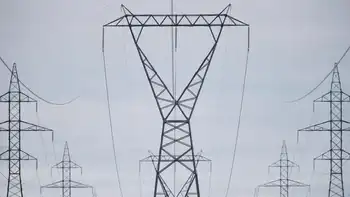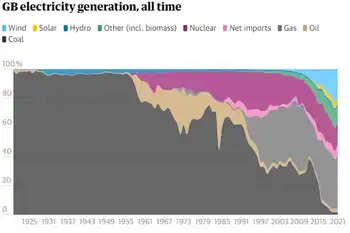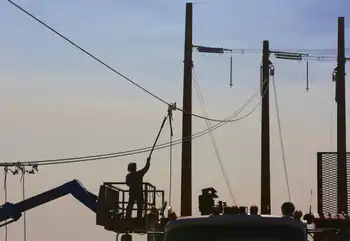Rejection of coal gives nuclear fresh hope
By Orlando Sentinel
NFPA 70e Training - Arc Flash
Our customized live online or in‑person group training can be delivered to your staff at your location.

- Live Online
- 6 hours Instructor-led
- Group Training Available
Florida — and other states — all but stopped building nuclear plants for 30 years as a result of accidents at Three Mile Island and Chernobyl.
Now it's not a question of whether, but when, new nuclear reactors will be built.
Our governor is trying to win the Republican primary for U.S. Senate (hence his sudden lack of eagerness for and indefinite postponement of his annual climate-change summit) and will soon leave office, leaving us to figure out the details.
And when it comes to nuclear, the details will hit us right in the wallet.
The reality is that carbon-free power such as nuclear is expensive.
But it's also reliable and, when done right, safe.
On a recent visit to Progress Energy Florida's nuclear plant in Crystal River, the security was impressive. Background checks of everyone who enters the property, vehicle inspections, spirals of razor wire and our assault-rifle-toting escort were the most obvious measures.
There's also the strict monitoring of radiation exposure (we wore radiation dosimeters, which measured our exposure at zero) and the 3 1/2-foot thick concrete casing that holds the reactor.
The scary part these days is the dollar signs.
Next month the Public Service Commission, which regulates Florida's investor-owned utilities, will consider how much Progress will be allowed to charge customers next year in upfront costs before it builds two new nuclear reactors. The total price of the project planned for Levy County is estimated at $17 billion.
The Office of Public Counsel, the attorneys charged with representing consumers on utility matters, is questioning whether Progress made a potentially costly mistake. It signed a contract December 31 with Toshiba Corp.'s Westinghouse Electric and Shaw Group Inc. to build the plant.
The ink was barely dry when the federal Nuclear Regulatory Commission told the utility it could not begin building the plant's foundation until it received its license, likely not until 2012.
That will set the project's schedule back by at least 20 months to 2018 or beyond, meaning the costs in the contract could go up.
That's a particularly prickly issue during a recession in which customers are balking at any increases to their monthly bills.
Charles Rehwinkel, associate public counsel, said Progress may have ignored some warning signs before signing the contract that the feds would not allow it to begin work on the foundation.
"We think it will become more evident as we go forward," he said. "If this has put too much burden on the cost of the project, the customers have an opportunity to say some of those costs should be borne by the company because they made a mistake."
Progress Energy Florida Chief Executive Officer Vinny Dolan disputes those claims.
"This [the NRC's decision] is a decision I don't think could have been anticipated when we made the decisions we did," he said.
Regardless of that issue, Progress wants to charge customers an extra $2.38 per 1,000 kilowatts each month beginning in January for costs associated with the plant's construction. That's in addition to an extra $9.66 it wants to charge in increased base rates.
Nuclear charges, which the state allows the utilities to collect in advance of building the plants even if they ultimately decide to cancel the project, turned into a public-relations nightmare for Progress earlier this year. Customer backlash against higher rates led Progress to reduce some of those costs in April.
Dolan says finding the right balance between clean-energy policy and consumer cost is important. Coal provides about 50 percent of the power supply in the United States, though new coal plants were all but banned in Florida under Crist's energy policies a few years ago. Dolan said the cheap, reliable and plentiful fuel shouldn't be forgotten.
"I think it's important, and we have to apply the right amount of research and development to keep coal as part of the equation," he said.
But coal is far from carbon-free. And even if Crist is turning a paler shade of green, coal is still unlikely to win out over nuclear in Florida.











